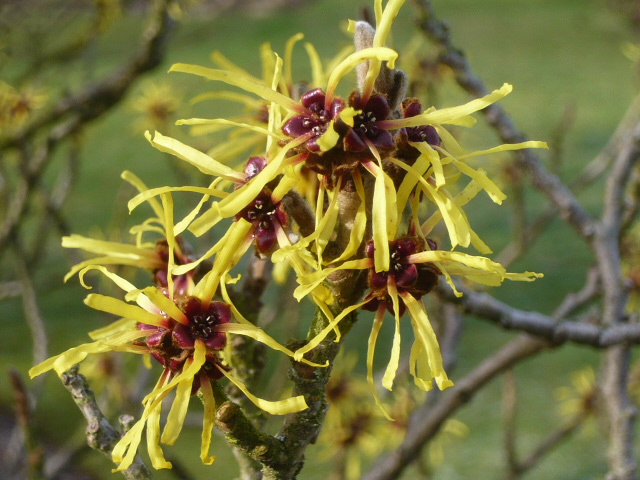
Growing Witch Hazel

Witch Hazel or Hamamelis is a scented winter-flowering shrub. The spicy fragrance and spidery flowers in yellow, orange or red make it a must for the winter garden.
Where to Plant Witch Hazel
- Do not plant young shrubs in a frost pocket even though plants are hardy.
- Witch Hazel like an open sunny position and need space to develop all be it slowly.
- Avoid exposed and windy positions.
- Clay soil needs improving with added humus and drainage.
- Acid or neutral soils are best but chlorotic yellow leaves can be treated and fed with chelated iron.
On Going Cultivation
- Water young plants during dry spells.
- Propagation is from budding to root stock. It is difficult to grow from cuttings.
- Witch Hazel needs little pruning provided there is room to let them grow freely to their full size.
- Prune out any dead or damaged wood and any congested, crossing or weak shoots.
- Remove suckers in autumn as these will probably be from the rootstock plant.
RHS Recommended Varieties
H. x intermedia ‘Diane’ AGM: The finest red flowered witch hazel. It has a long flowering period throughout midwinter and is lightly scented. Height 2.5m (8ft). Spread 3m (10ft).
H. x intermedia ‘Jelena’ AGM: One of the best cultivars, unscented coppery orange flowers appear in early to mid-winter. Height 4m (13ft). Spread 4m (13ft).
H. x intermedia ‘Pallida’ AGM: Thought to be the best sulphur-yellow cultivar for garden use. Height 3m (10ft). Spread 4m (13ft).
H. mollis ‘Wisley Supreme’: Flowering in January, it has a good scent and bright yellow flowers. Height 3m (10ft). Spread 3m (10ft).
H. virginiana: Bears yellow, scented flowers in mid-late autumn, rather than in winter. Height 4m (13ft). Spread 4m (13ft).
See more photos from gardeners tips
For tips on pruning
For plants visit the Witch Hazel Nursery
For 15 Uses of Witch Hazel see this link
3 thoughts on “Growing Witch Hazel”
Comments are closed.